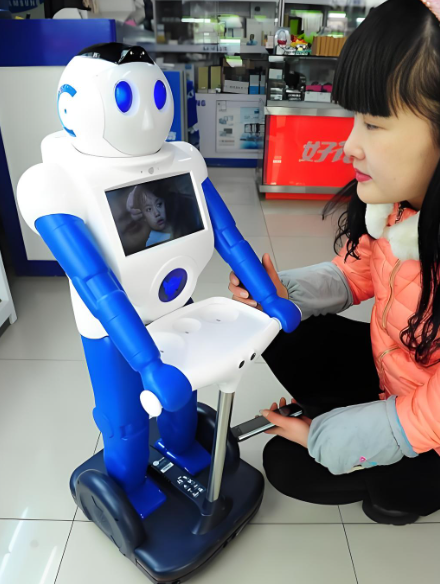As a core component of human-machine interaction, touch screens have been widely used in robot systems in multiple industries such as
industry, medical, agriculture, and logistics. Their intuitive operation, real-time feedback, and flexible configuration capabilities have
significantly improved the intelligence level and operating efficiency of robots. The following are specific application scenarios and case
analyses:
Industrial manufacturing
1. Collaborative robots
Application scenarios: assembly lines, quality inspection, and material handling
Functions: Setting task parameters (such as gripping force and path planning) through the touch screen, real-time monitoring of robot
status (such as load and temperature), and support for fault diagnosis and rapid maintenance.
Case: The collaborative robot is equipped with a 7-inch touch screen, and the operator can adjust the end effector movement through
touch to achieve precision assembly.
2. Automated welding robot
Application scenarios: automobile manufacturing, steel structure processing
Function: The touch screen integrates a welding process library (such as current, voltage, and welding speed), and the operator can quickly
call preset parameters and optimize welding quality through a real-time monitoring interface.
Case:The welding robot is equipped with a 10.4-inch touch screen, which supports multi-axis linkage control and welding trajectory preview.
Service and retail industry
1. Catering service robot
Application scenario: restaurant food delivery, hotel delivery
Function: The touch screen is used as the user interaction interface, supporting order confirmation, route selection, voice interaction
(such as "Please take the meal"), and displaying the robot's battery and task status.
Case: The robot is equipped with a 15.6-inch touch screen, and customers can select dishes or view restaurant information by touch.
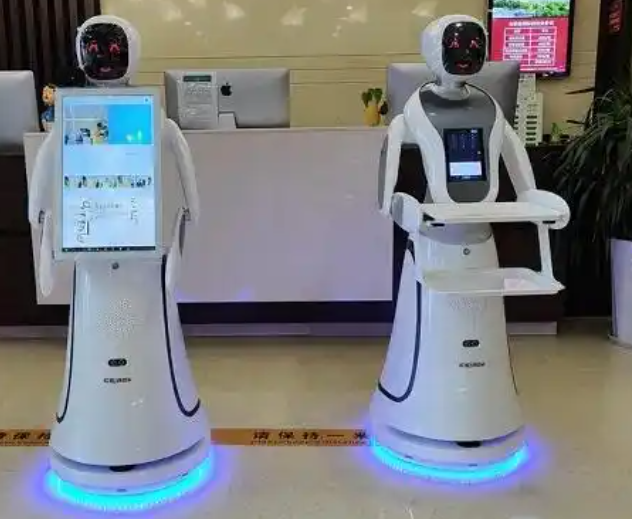
2. Retail shopping guide robot
Application scenario: shopping malls, supermarkets
Function: The touch screen integrates product recommendation algorithms (such as personalized display based on user historical behavior),
supports virtual try-on/trial (such as clothing, cosmetics), and updates promotion information in real time.
Case: The robot provides AR makeup trial function through the touch screen, and customers can intuitively compare the effects of different
color numbers.
Medical and health field
1. Surgical assistance robot
Application scenario: minimally invasive surgery, remote operation
Function:The touch screen is used as the main control interface, supporting surgical instrument selection, 3D image navigation, and force feedback
adjustment. Doctors can zoom in and out the field of view or mark lesions by touch.
Case: The surgical robot is equipped with dual touch screens, and the surgeon can adjust the robot arm movement and energy parameters
in real time.
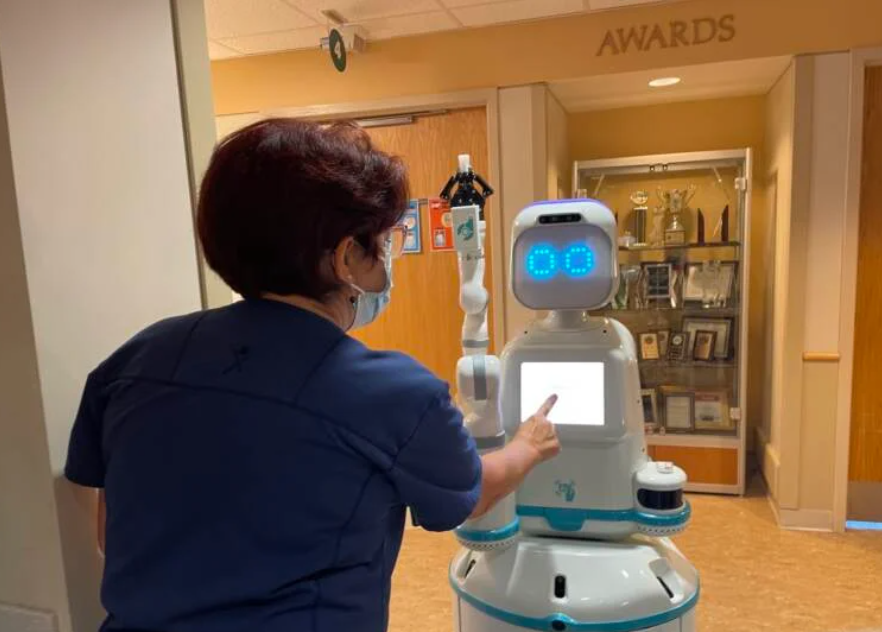
2. Rehabilitation training robot
Application scenarios: hospitals, rehabilitation centers
Function: The touch screen displays patient motion data (such as joint angles, electromyographic signals), supports the formulation of
personalized training plans, and improves patient participation through a gamified interface.
Case: The rehabilitation robot is equipped with a 10.1-inch touch screen, and patients can select training modes
(such as gait simulation, balance training) by touch.
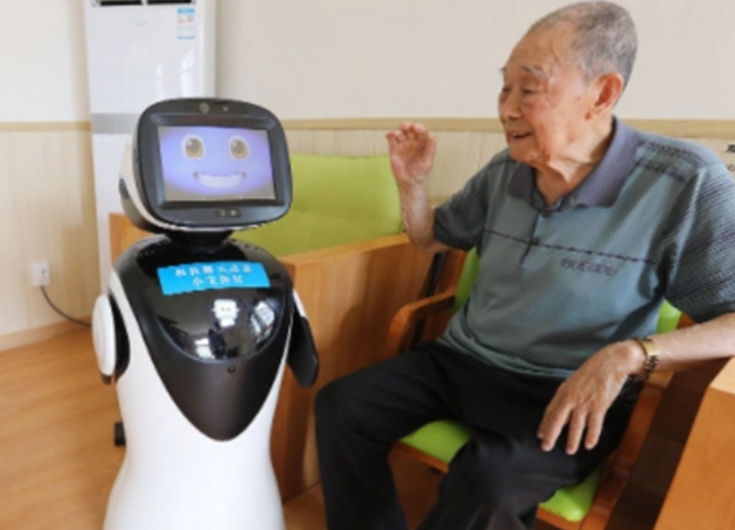
Agriculture and environmental protection
1. Agricultural picking robot
Application scenarios: orchards, greenhouses
Function: The touch screen integrates crop recognition algorithms (such as fruit positioning based on deep learning), supports picking
parameter settings (such as gripping force, shearing angle), and displays operation progress.
Case: The picking robot is equipped with a 7-inch touch screen, and the operator can adjust the picking strategy to adapt to different
varieties by touch.
2. Environmental monitoring robot
Application scenarios: sewage treatment, air quality detection
Function: The touch screen displays sensor data (such as pH value, dissolved oxygen, PM2.5) in real time, supports abnormal alarms and
historical data queries, and can remotely control sampling equipment.
Case: The monitoring robot provides water quality analysis reports through the touch screen, and users can export data to the cloud for
further analysis.
Logistics and warehousing industry
1. Automated guided vehicle (AGV)
Application scenario: warehouse, factory
Function: The touch screen is used as a task scheduling terminal, supporting path planning, task allocation, power monitoring, and can
work in collaboration with other AGVs.
Example: Equipped with an 8-inch touch screen, the operator can adjust the handling priority or emergency obstacle avoidance by touch.
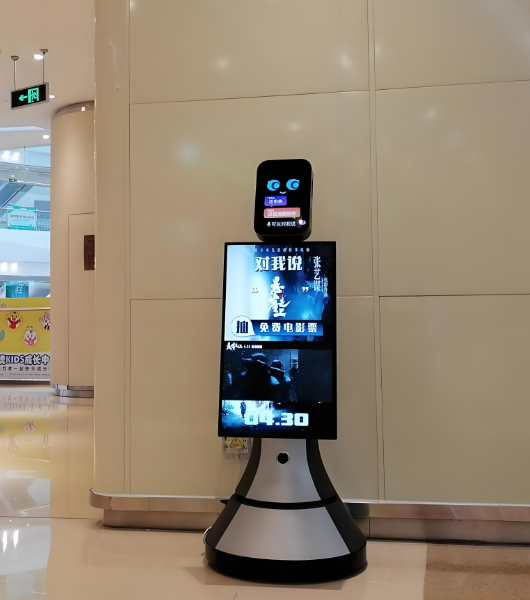
2. Intelligent sorting robot
Application scenario: Express delivery center, e-commerce warehouse
Function: The touch screen integrates the package identification system (such as barcode/QR code scanning), supports the configuration
of sorting rules (such as by destination, weight), and displays sorting efficiency statistics.
Example: The sorting robot updates the sorting tasks in real time through the touch screen, with an error rate of less than 0.01%.
Education and scientific research field
1. Educational robot
Application scenario: School, training institution
Function: The touch screen is used as a programming teaching interface, supporting graphical programming (such as Scratch) and code
editing. Students can control the robot's movements by touching and dragging modules.
Example: The robot is equipped with a 4.3-inch touch screen, and students can intuitively learn the principles of robot kinematics.
2. Scientific research robot
Application scenarios: laboratories, research institutes
Functions: The touch screen integrates the experimental parameter configuration interface (such as temperature, pressure, reaction time),
supports real-time data recording and curve drawing, and can remotely control the experimental process.
